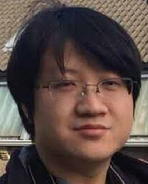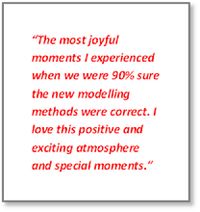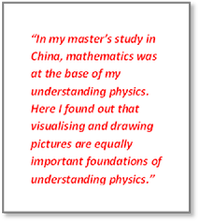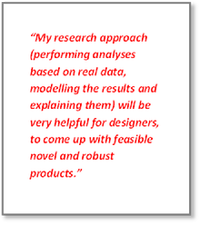 The aim of this thesis was to provide theories and models, to explain transmission, reflection and dispersion spectra of high quality resonances in photonic crystal waveguides. Developing experimental methods to probe and control these resonances, may make single and multi-resonance systems suitable for future applications, such as: optical memories, delay lines and cavity quantum electrodynamics (QED).
The aim of this thesis was to provide theories and models, to explain transmission, reflection and dispersion spectra of high quality resonances in photonic crystal waveguides. Developing experimental methods to probe and control these resonances, may make single and multi-resonance systems suitable for future applications, such as: optical memories, delay lines and cavity quantum electrodynamics (QED).
‘Characterization, control and investigation of the optical properties of these resonances will pave the way for their applications,’ Jin Lian says. ‘Numerical analyses, performing experiments, theoretical modeling (and controlling these models) alternated constantly during my PhD project. This is characteristic for this field of research: in order to build solid novel systems one needs credible models.’
The theoretical investigation explored methods of calculating key parameter coupling factors, which determine the dispersion of multi-resonance systems. Further, the physical cause of the pronounced asymmetric dispersion of a multi-resonance system based on mode-gap cavities was uncovered, and a dispersive mode coupling model that accurately describes the asymmetric dispersion was formulated.
Experimental and theoretical investigations of reflection and transmission spectra of resonances in photonic crystal waveguides were performed. For example, ultra high transmission TM (transverse magnetic)-like light signals have been measured and analyzed. Further, using a non-invasive method, the spatial profile of a localized mode (with Q > 105 with a resolution of 2.5 μm) was successfully reconstructed.
Jin Lian worked on nanophotonic resonator arrays: theoretical, numerical and experimental investigations of controlling light propagation in disordered and ordered photonic crystal cavities and waveguides. He orientated himself in fields which involve strong analytical and numerical modelling on complex photonic systems.
Curiosity

‘While working I am very much curiosity driven,’ Jin Lian says. ‘I guess 60% of my working time, I spent on performing experiments in the optics lab. When there were unexpected results, new theoretical models had to be developed, explaining these new phenomena. The most joyful moments I experienced when we were 90% sure the new modelling methods were correct. I love this positive and exciting atmosphere and special moments.
Palaiseau
During his PhD work Jin collaborated with Thales Research and Technology in Palaiseau. Jin: ‘As the best in fabricating III-V semiconductor nanophotonic structures in Europe, they fabricated the samples we came up with, using their equipment, to see if our ideas and designs were doable. From this we could adjust some design parameters in an early stage. The collaboration between us, scientific researchers, and them, R&D experts at an honoured business, proved very pleasant and fruitful.’
Jin’s style of interpreting physics changed during the four PhD years. ‘In my master’s study in China, mathematics was at the base of my understanding physics,’ he says. ‘Here I found out that visualising and drawing pictures are equally important foundations of understanding physics. Also I learned that presenting my results in a professional manner is very important, be it in publications, poster presentations or at conference talks.’
Applied Nanophotonics (ANP)
Jin appreciated greatly the contributions from his Professor Allard Mosk, and the group leader of Complex photonic systems (COPS) Professor Wilem Vos. Also he enjoyed the monthly meetings of Mesa+’s Applied Nanophotonics Institute. Here, colleagues from five other Groups - all sharing expertise on optics themes - share knowledge and ideas for research topics and research lines.
Industry

After working as a post-doc for another half year to come - to finish off some final publications - Jin prefers to work in industry rather than in academics.
Jin: ‘In this field of research my approach (performing analyses based on real data, modelling the results and explaining them) will be very helpful for designers, in order to come up with feasible novel and robust products. Perhaps I might return to academics one day. This is a common route. Vice versa is much more rare.
